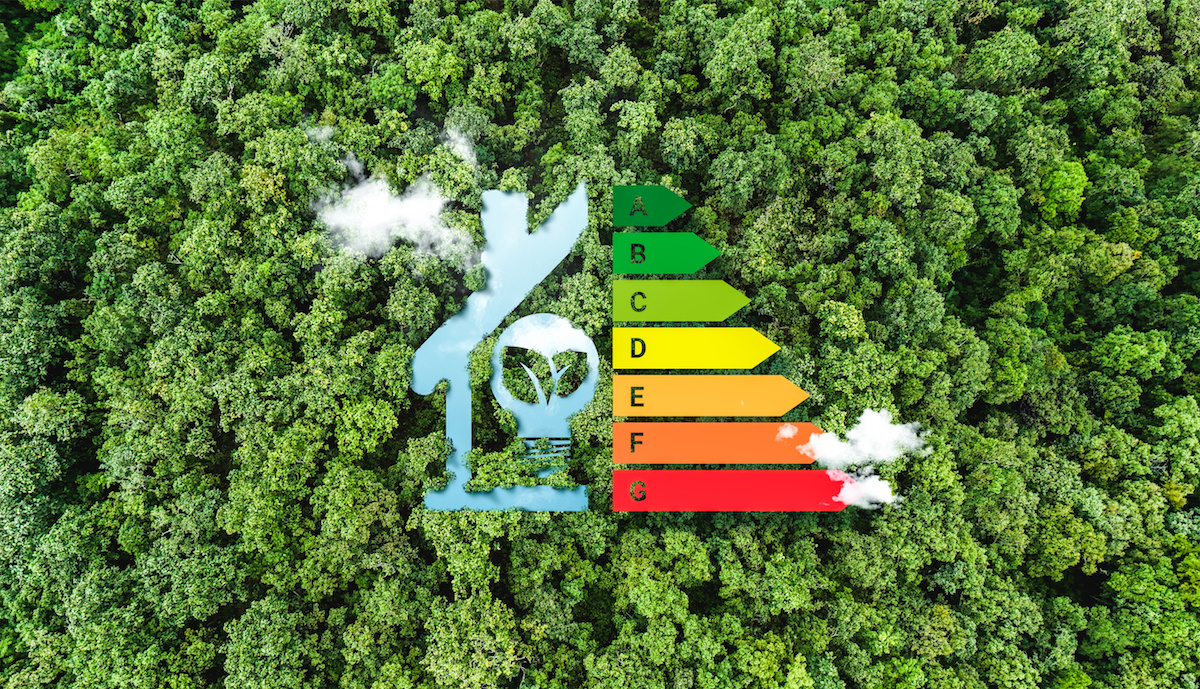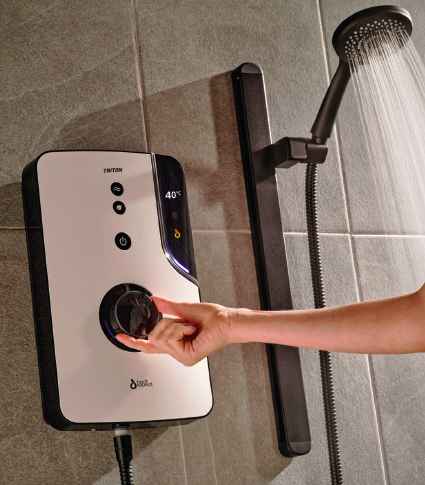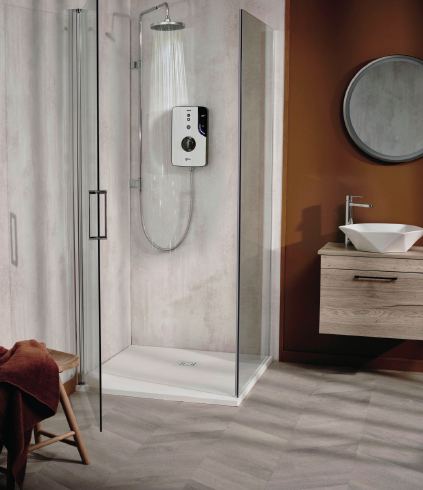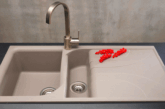
As hot water production becomes the dominant energy load in new-build homes, housebuilders must address this shift without sacrificing comfort or compliance.
Paul Ravnbo-West, market development manager at Triton Showers, introduces the duo able to help reduce water use and improve energy efficiency
In a strange way, the Future Homes Standard (FHS) can be likened to Pep Guardiola’s arrival at Manchester City. As he has revolutionised the Premier League over the past decade, the FHS is set to do the same for housebuilding. Rather than setting the foundation for a treble, however, the incoming regulations lay the groundwork for the UK’s ambitious aim of reaching net zero by 2050.
Perhaps describing this analogy as strange was an understatement…
To ensure the blueprint makes its mark in a similar fashion to a well-known Norwegian striker, housebuilders face the challenge of reducing carbon emissions in new-build homes by 75-80% compared to those built under 2013 legislation.
Showers are both the largest consumer of water at home and responsible for half the hot water energy demand generated. This makes them an important starting point for those looking to build more sustainable and efficient homes.
The case for electric showers
An electric shower uses electricity to produce instant and continuous hot water. They eliminate the need for long pipe runs from the cylinder to shower, which can lead to heat loss and delayed hot water reaching the shower – one of the most common sources of water waste. As the dependence on stored hot water is vastly reduced, electric showers can enable a smaller hot water cylinder to be installed, saving space and money.
Electric showers operate at lower flow rates than mixers, using less water per minute without compromising on comfort. These features combined make them a viable solution for homes set for construction in water-stressed regions, where permitted water use is less than 110 litres per person per day.
The tightened limit – down from the standard 125 litres – is being adopted by an increasing number of local authorities as part of planning conditions to futureproof developments against inevitable water shortages.
WWHRS – A perfect partner
The benefits of electric showers are further amplified with Triton’s new HeatRepeat® technology enabling electric showers, for the first time, to be connected to a Waste Water Heat Recovery System (WWHRS).
A WWHRS captures the heat from the used shower wastewater, which is normally lost down the drain, and uses it to preheat the incoming cold mains water to the electric shower unit. This significantly reduces the energy required in showering.
Not only does this passive process lower a household’s overall CO2 emissions and energy bills, but it also improves shower performance, particularly during colder months when mains water temperatures plummet.
This removes the longstanding perception that as incoming water temperature drops in winter, so does the performance of electric showers. What’s more, the duo supports grid resilience by lowering peak energy demand – in the morning and evening.
For developers, it offers a practical route to achieving compliance with Part Lof the Building Regulations outperforming mixers in key SAP metrics; Dwelling Emissions Rate (DER) and Dwelling Primary Energy Rate (DPER).
Akin to a midfield of Rodri and Kevin De Bruyne in their primes, anybody? The analogy lives on!
The latest innovations
ENlight® with HeatRepeat®, Triton’s first electric shower designed to connect to WWHRS, can reduce annual energy consumption by up to 51%, water usage by 44% and produce carbon savings of up to 37%, when compared to a mixer shower connected to a WWHRS. When ENlight® with HeatRepeat® is connected to a WWHRS, the operational carbon emission savings, compared to a mixer shower, can negate its own embodied carbon footprint, including that of the WWHRS, in as little as three months.
Circling back to end-user experience, the shower also delivers a spray of approximately five litres per minute when connected to a WWHRS, improving overall satisfaction.
Future-proofing homes
As a significant contributor to domestic water and energy consumption, it is vital that showering solutions are on hand to help specifiers build zero-carbon-ready homes, guaranteeing compliance in the process.
Innovations like ENlight® with HeatRepeat® make certain that residents can also reap the rewards of a consistent, enjoyable showering experience and reduced energy bills throughout the year. After all, who needs Haaland when you have HeatRepeat®?
Discover more about ENlight® with HeatRepeat®










